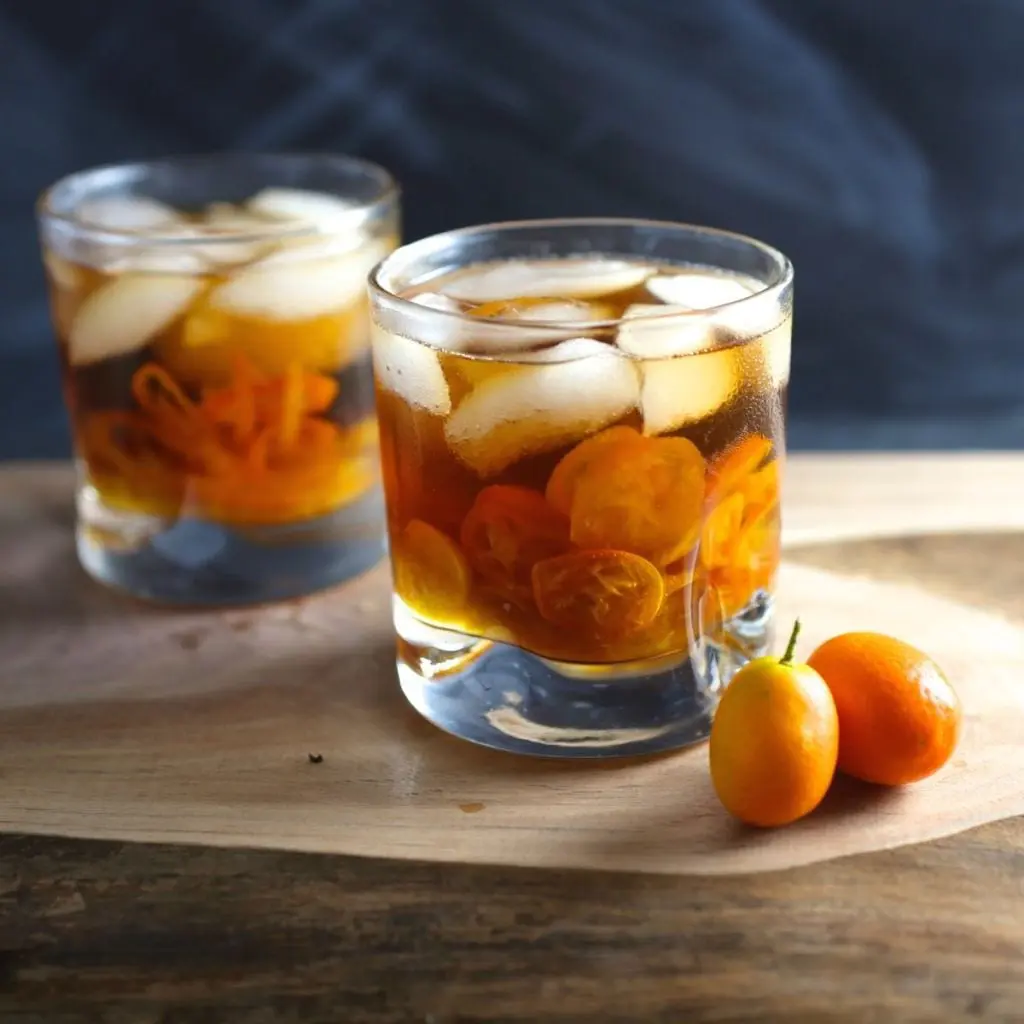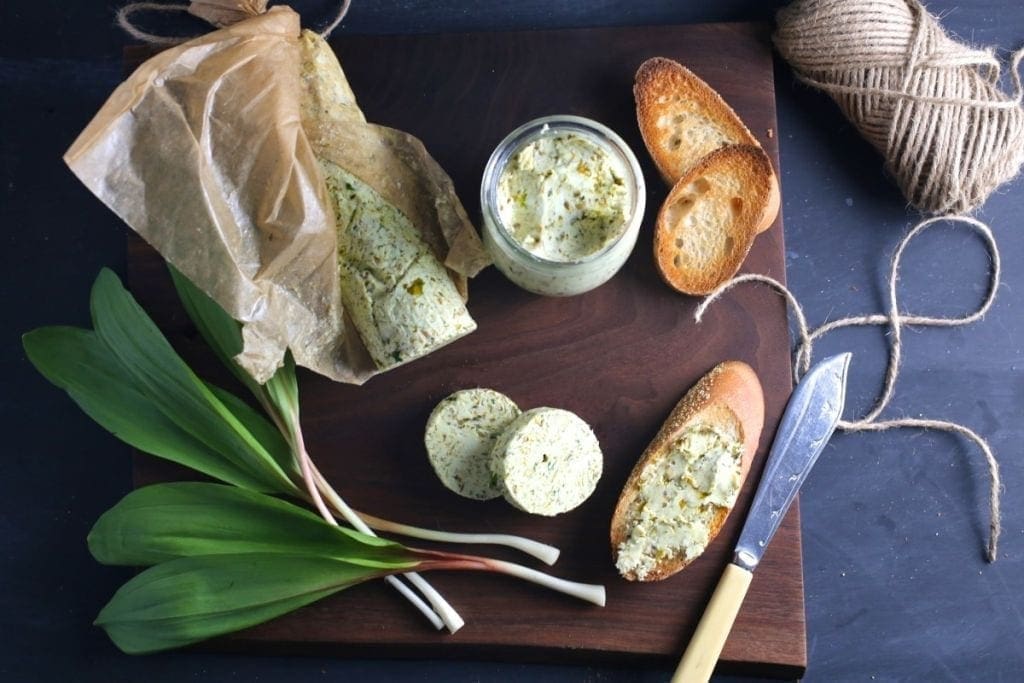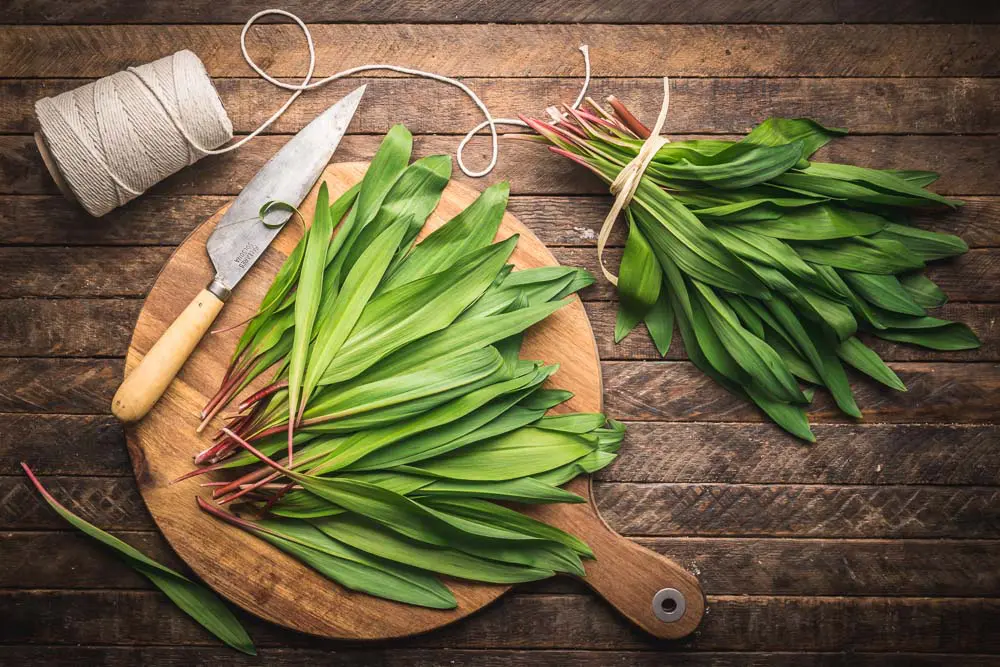Inspired by this Saveur recipe, we adapted our drink to use the Kumquat-Ginger Syrup instead of a kumquat-infused gin. One benefit is that the syrup can be used as soon as it’s cool, whereas the infusion can take a couple of weeks.

Inspired by this Saveur recipe, we adapted our drink to use the Kumquat-Ginger Syrup instead of a kumquat-infused gin. One benefit is that the syrup can be used as soon as it’s cool, whereas the infusion can take a couple of weeks.

Once you’ve made the Kumquat- Ginger Syrup, whipping up this drink is about as simple as it gets. Muddle some of the kumquats and their syrup in a rocks glass, add rum and a few ice cubes and stir. Top with some club soda. Bam, done.

Dark rum tends to have notes of vanilla and clove which is a lovely complement to the sweet/tart flavor of the kumquat syrup. The ginger in the syrup adds to the spiciness, making this a perfect drink in both warm and cold weather. It’s basically a Dark ‘N’ Stormy, with a twist. Yes, please.
This kumquat ginger syrup, made from tiny, tasty, nutritious citrus and fresh ginger, is a delicious and versatile cocktail mixer.
The majority of things that I buy at the grocery store or farmer’s market, I know exactly what I want to do with. Broccoli rabe looks good? Let’s make a pizza or maybe pasta with white beans. Carrots are on sale? Let’s roast them with honey and thyme or make carrot cupcakes. Totally reasonable.
Then there are the impulse buys. I saw these kumquats and I just had to have them. I mean, look at them!
They’re like teeny, tiny oranges meant for a doll! I ask you, reader: how could I resist them? Well, I couldn’t, which is why you’re looking at pictures of them right now. The thing is, I had absolutely no idea what to do with them once I got them home.
With the perfect balance of sweet, salty and spicy, our grilled Asian chicken skewers are a treat any night of the week. We like to serve it with creamy avocado-cilantro sauce.
Ramp and cheddar biscuits are a great savory vacation on the classic biscuit – you’ll wish you had your own secret ramp patch!
Hello, friends. If you’ve been following this blog from the very beginning (and if not, WHY) you might remember a recipe for ramp and fontina biscuits from a couple of years ago. Here it is. We were not tricking you, it was indeed a fine recipe and made good-tasting biscuits. However, the consistency of the final product was more like that of a scone, and did not have the rise nor the flakiness of a really excellent biscuit. I thought we could improve on that with a new technique.

Ramps, a seasonal treat in the Northeast US, are in danger of being over-harvested. Since they are very slow to cultivate and difficult to farm, foraging is still the main way to find them. A wild ramp patch can be quickly overrun and destroyed. The most sustainable way to harvest ramps, if you find them yourself, is to cut only one leaf of each plant, leaving the bulb and second leaf to continue growing. This is least impactful on the soil, the plant, and the colony as a whole. We’ve adapted the recipe below to use only the ramp leaves, and you’ll find ramps in this form from sustainable vendors.
“Ahem,” [Taps mic, looks around nervously]. “It all started around ’98. ’99. It was like they were giving it away, you know? We just thought, ‘hey, these are pretty good!’. We didn’t understand. We didn’t know what would happen.” [Squares shoulders, takes deep breath]. “My name is Emily, and I am addicted to ramps.”
This is me at the farmer’s market during ramp season:

I feel a tiny bit bad about evangelizing a vegetable that can be very hard to find but this was just too good not to share. Making ramp butter, along with pickling, is one of the best ways to preserve ramps so you can enjoy them all year round.

For those of you who are unfamiliar with ramps, I’m going to shamelessly cut and paste the description from our last ramp post, Brown Butter Ramps and Oyster Mushrooms on Ricotta Crostini;
Your basic ramp, Allium tricoccum, is a North American species of wild onion that grow across eastern Canada and the eastern United States. (The European/Asian variety is allium ursinum.) I know that doesn’t sound very exciting but they have a unique oniony-garlicky flavor that, if you like that kind of thing, is really fantastic. They are also notoriously difficult to cultivate and their growing season is very short, so they are a true delicacy. That means crazy people (me), will travel far and wide to find them, so if you’re lucky enough to have them in your region, don’t expect to saunter over to the farmer’s market at noon and expect to find any left (because I got there at 7 and bought them all).